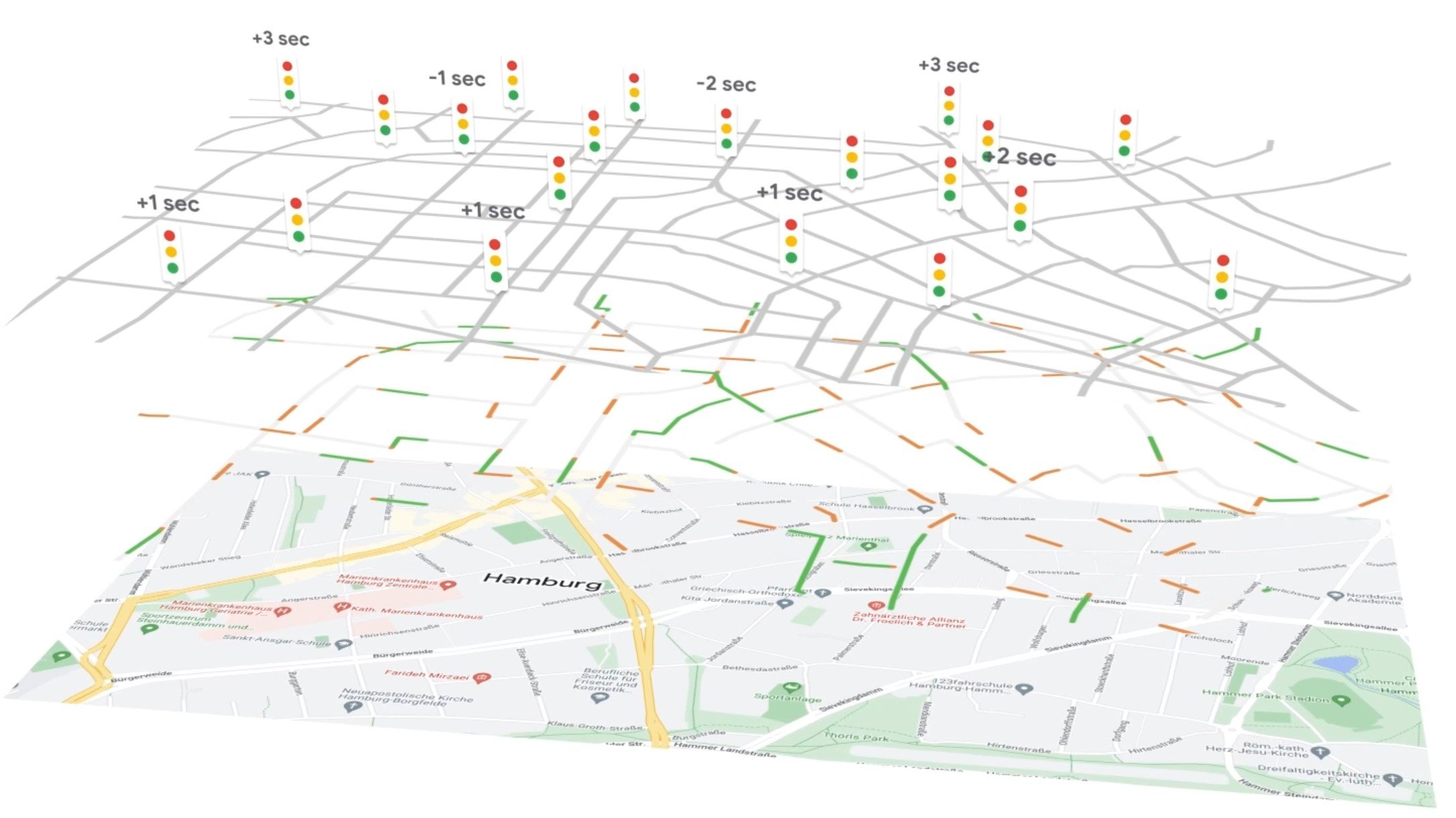Affiliate links on Android Authority may earn us a commission. Learn more.
Even AI doubters will love what Google is doing to shorten your commute
Published onJuly 30, 2024
- Project Green Light uses travel data from Maps users to model driver behavior at specific intersections.
- Google uses its analysis to make recommendations about adjusting signal timing to optimize traffic flow.
- The goal is to expand to hundreds of cities within the next few years.
No one’s going to blame you for feeling a little burnt out on AI. Artificial intelligence seems like it’s been at the dead center of the tech zeitgeist for so long that it’s enough to have you feeling nostalgic for NFTs. And while there are absolutely situations where it’s being used poorly, or being used in ways that feel threatening, there are others where AI trying to smarten up an ancient, dumb system sounds like the very best thing that could happen for everyone involved. That is just what Google’s been up to with Project Green Light, an AI-driven effort to improve traffic efficiency, and this week the company offers a little insight into how well that’s been going.
The problem Green Light wants to help with is simple to understand: optimally controlling traffic signal scheduling is difficult and expensive. It’s hard because cities lack a complete data set on all the traffic flowing through a given intersection, and efforts to acquire data, like with car-sensing inductive loops buried in the pavement or rubber-tube traffic counters draped across the roadway, are limited in what they can gather. But Google has Android and all its detailed location data to mine, giving it a massive dataset of driver habits. Project Green Light is basically Google realizing “if we crunch these numbers, we can probably make some really accurate recommendations on adjusting traffic light timing to cities.” And that’s just what’s been happening.
It’s important to note, this is not a live system, monitoring Android users as they drive around, and adjusting traffic lights in real time. (Google even clarifies in its Green Light FAQ: Maps users don’t get an automatic green light.) Instead, it’s based on Google using AI to model intersections with historical driving data. And then based on that analysis, Google goes to cities and can tell them, “make this light green for a few seconds longer in the mornings, and this one red for twice as long late at night.” For cities, the big benefit is that there’s no extra hardware or software to install; if they’re interested, they just punch Google’s recommendations into their existing light scheduling systems.
Sounds great, right? Well, that’s what Google’s trying to sell to cities, and so far has convinced a dozen around the world to give Green Light a try. That all adds up to over 70 intersections currently analyzed with Google’s AI model. We know — that doesn’t sound like a ton — but you’ve got to start somewhere, and municipalities are notoriously slow to embrace change. Still, Google’s making progress, most recently bringing Green Light and its traffic optimizations to Boston. When things are working well, the system can result in drivers experiencing 30% fewer stops, as more green lights show up when they need them. Now who can complain about AI helping with that?
